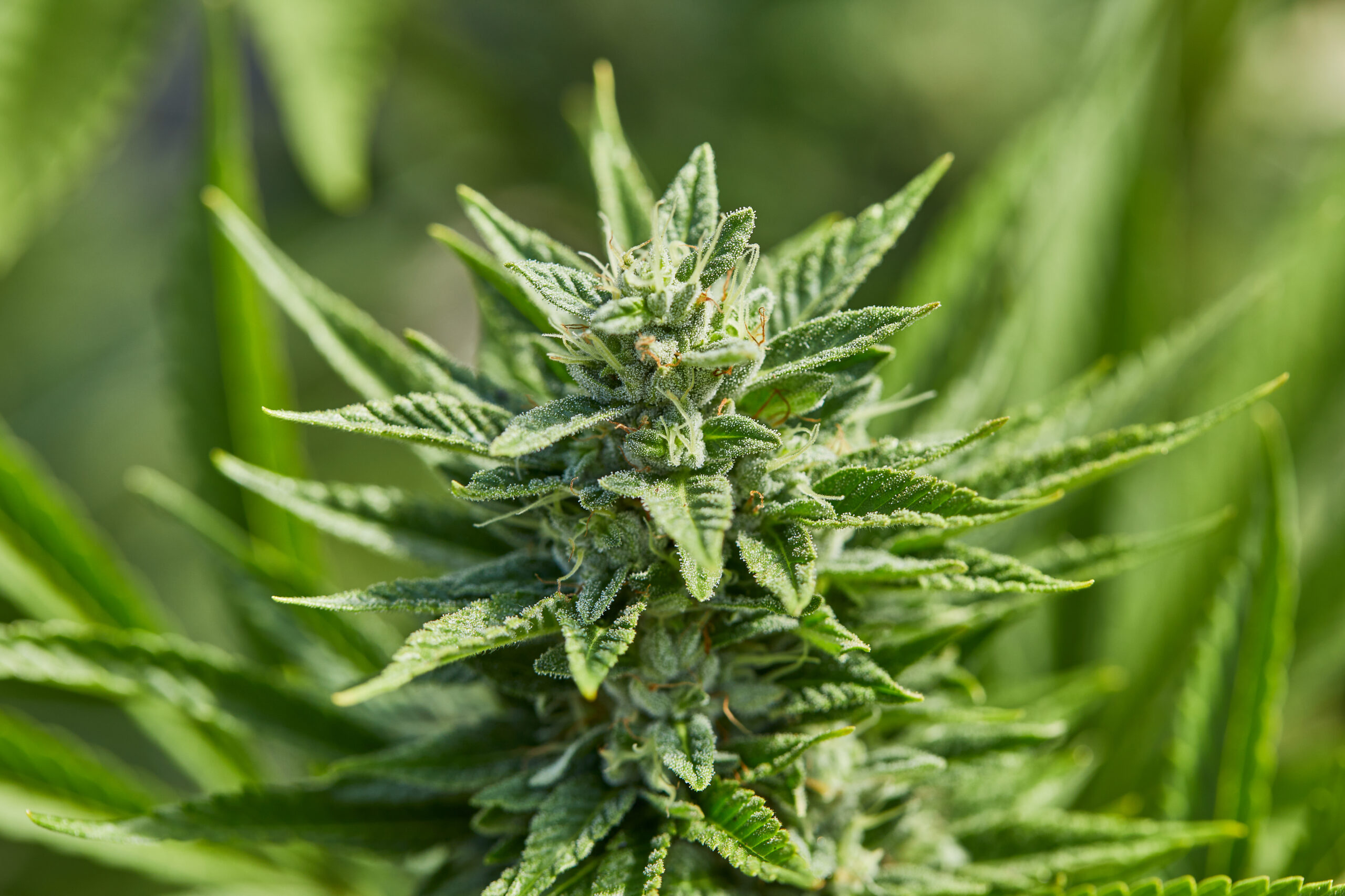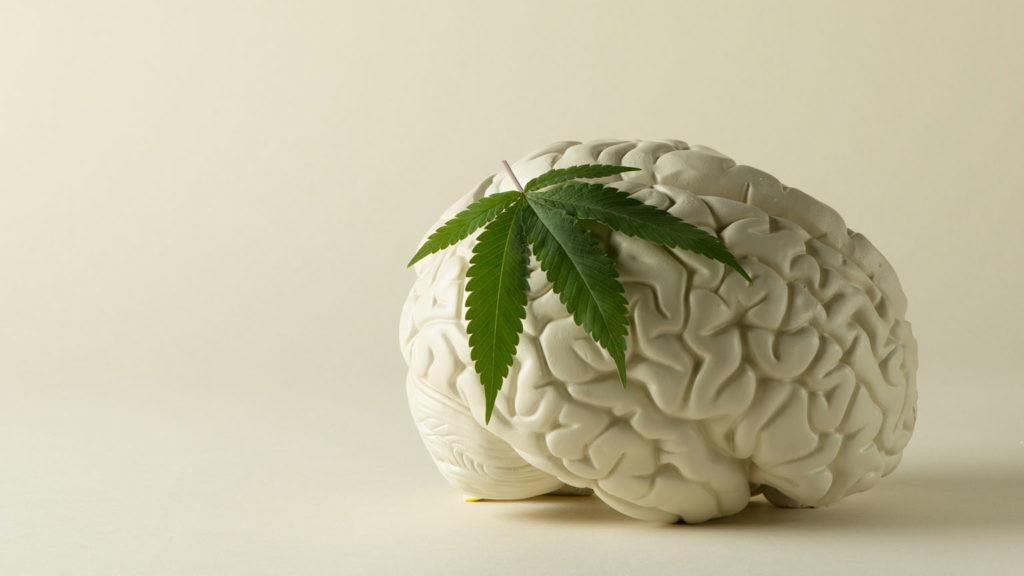In recent years, cannabidiol (CBD) has received more attention for its therapeutic potential, but THC is arguably still the most famous cannabinoid produced in the cannabis plant. Learn the history of THC, how it works, and which products you can try on the current market.
What is Delta-9 THC?
Delta-9-tetrahydrocannabinol, aka Delta-9 THC or simply “THC,” is the most well-known and abundant compound found in cannabis.
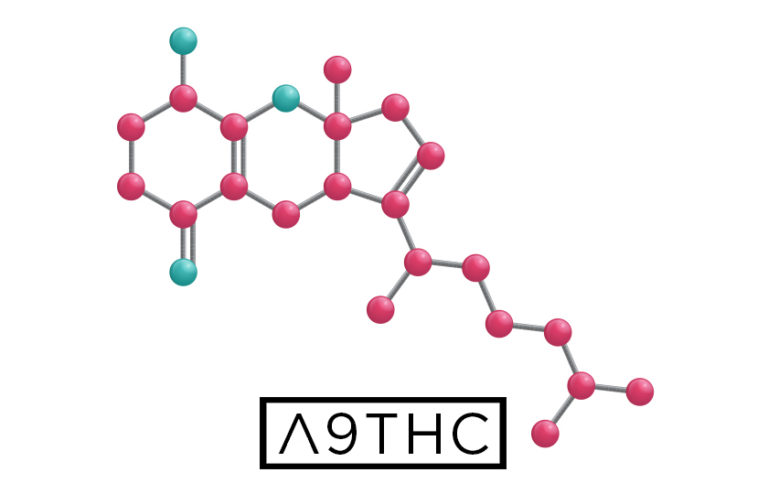 Photo by: Weedmaps
Photo by: WeedmapsImage lightbox

Capable of inducing various potential effects, from euphoria to pain relief, without it, cannabis could not produce that classic weed high. And while it's not solely responsible for the psychoactive effects of cannabis, it is the primary psychoactive component.
A brief history of THC
Archaeologists have found evidence of cannabis with high levels of THC in western China dating back 2,500 years. As these artifacts suggest, humans may have been intentionally cultivating and selecting THC-rich cannabis specimens for a long time. However, it wasn't until the 1960s that the technology to isolate THC directly from the plant became available.
Harvard-trained chemist Dr. Roger Adams was the first to identify THC and synthesize it in a laboratory. Dr. Raphael Mechoulam, “the godfather of cannabis science,” then uncovered THC's chemical structure in 1964 at Israel's Weizmann Institute of Science. This breakthrough set cannabis research in motion, and more scientists began to explore other cannabinoids and their effects on the body.
How does Delta-9 THC work?
Delta-9 THC binds to cannabinoid receptors in the body and brain. When THC, a cannabinoid, interacts with specific receptors in your brain and central nervous system — known as “cannabinoid receptors” — it produces intoxicating effects. This system is known as the endocannabinoid system (ECS), a complex cell-signaling network involved in regulating various physiological processes throughout the human body. It also binds to other non-cannabinoid receptors, resulting in anti-inflammatory, analgesic and other important effects.
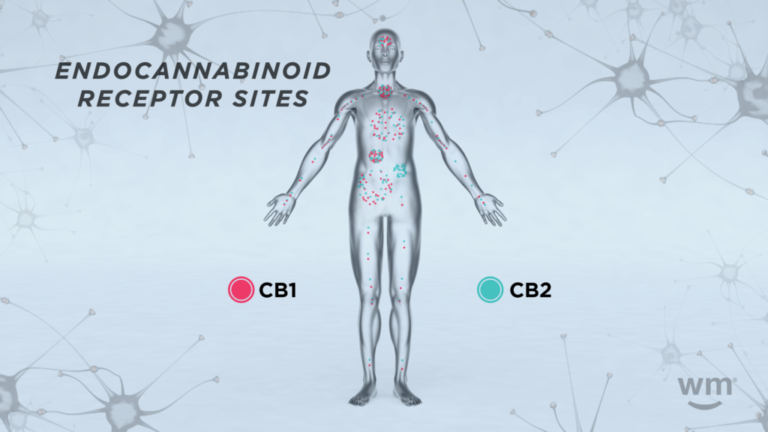 Photo by: Weedmaps
Photo by: WeedmapsImage lightbox

THC disrupts neurotransmitter release while interacting with your ECS, often leading to altered perception, mood, and cognition. THC can also trigger dopamine release, contributing to feelings of pleasure and reward, which we often associate with a high feeling. Depending on the THC dosage, consumption method, and individual responses, these effects vary greatly.
What are the effects of Delta-9 THC on the body?
Consuming Delta-9 THC can result in mental and physical responses, some of which may be pleasurable and others may not.
 Photo by: Gina Coleman/Weedmaps
Photo by: Gina Coleman/WeedmapsImage lightbox

Before partaking in any product that contains THC, consider some of the most common effects:
Potential beneficial effects
- Relaxation
- Euphoria
- Enhanced libido
- Pain relief
- Reduced nausea
- Increased appetite
- Sleepiness
Potential side effects
- Impaired coordination
- Rapid heart rate
- Dry mouth
- Red eyes
- Increased appetite
- Paranoia
- Anxiety
- Impaired memory
- Respiratory irritation (when smoked)
- Reduction in REM sleep
Note: these effects vary widely depending on dosage, consumption method, individual tolerance, and metabolism. Start with the lowest dose of THC and gradually increase until you find what works best for you.
What are Delta-9 THC's medicinal uses?
The research is ongoing, but there's evidence to suggest THC may offer several therapeutic uses, including:
- Pain relief: Research shows that THC may help manage chronic pain.
- Appetite stimulation: Most of what we know about THC and appetite stimulation comes from cancer and AIDS research. THC may stimulate appetite by interacting with hormones such as ghrelin and leptin, which regulate food intake.
- Anti-nausea: The endocannabinoid system and THC may play a role in reducing nausea and vomiting. A 2011 study published in the British Journal of Pharmacology showed THC may help reduce nausea and vomiting in cancer patients suffering side effects from chemotherapy.
- Reduced muscle spasticity: According to several studies, cannabis might help reduce muscle spasticity associated with multiple sclerosis (MS).
What are the side effects, risks, and long-term effects of Delta-9 THC?
THC may result in different side effects depending on whether you use it over a short or long time.
- Short-term: In the immediate aftermath of smoking or consuming high-THC cannabis, you may experience impaired coordination, short-term memory loss, paranoia, rapid heart rate, dry mouth, bloodshot eyes, and a case of the munchies. These side effects, of course, depend on your individual body, tolerance, and dose level.
- Long-term: If you consume THC frequently, for several months to years, you may experience respiratory issues, memory loss, and a higher tolerance, which makes it difficult to achieve the same effects with your usual dose. If you suspect you may be overconsuming, consider taking a tolerance break.
THC vs. CBD: What's the difference?
While THC and CBD are two of the most well-known and widely studied cannabinoids found in the cannabis plant, they react with the body in dramatically different ways.
Effects
- THC: produces the "high" or euphoria we all associate with cannabis use by binding to CB1 receptors in the brain and central nervous system.
- CBD: non-intoxicating and does not produce that classic high feeling. That's because it does not significantly bind to CB1 receptors in the same way THC does.
Side effects
- THC: can impair your memory and cognitive abilities, increase your heart rate, and induce paranoia in some individuals.
- CBD: generally well-tolerated and, in low doses, rarely has any side effects. In much higher doses, sedation, diarrhea and changes in appetite may occur.
Medicinal uses
- THC: has shown potential medicinal uses for reducing pain, anxiety, nausea, and muscle spasms.
- CBD: may offer many of the same medical properties without the intoxication.
Legality
- THC: classified as a controlled substance in the US. Its use is restricted or prohibited in many states.
- Cannabis-derived CBD: with higher THC content, it faces different legal restrictions depending on the region.
- Hemp-derived CBD: contains less than 0.3% THC, so it's legal (thanks to the 2018 Farm Bill) if retailers comply with local regulations.
What are the different Delta-9 THC products?
Here are some of the most popular ways to consume THC:
Flower
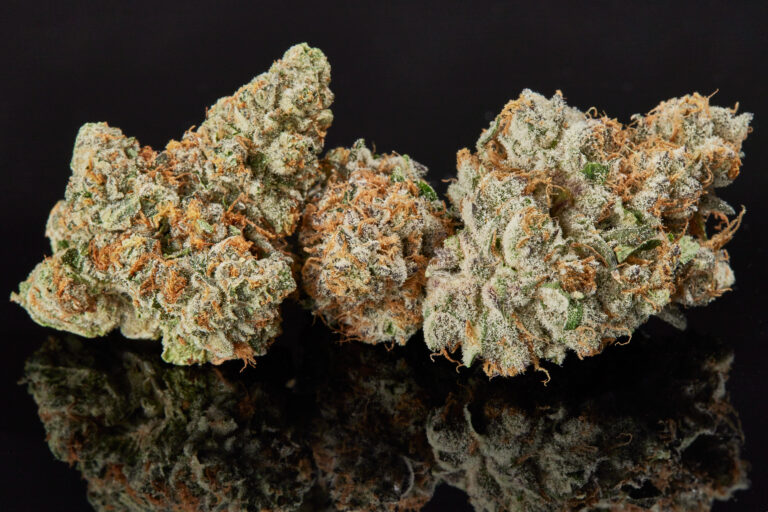 Photo by: Gina Coleman/Weedmaps
Photo by: Gina Coleman/WeedmapsImage lightbox

Flower is a general term that refers to the smokable, trichome-covered buds of a female cannabis plant. Flower is the most popular form of cannabis due to its versatility — you can smoke it via a pipe, bong, blunt, joint, or herb vaporizer. High-THC cultivars, or cultivated varieties of cannabis, are the most widely sought-after and highly valued products on the market.
Concentrates
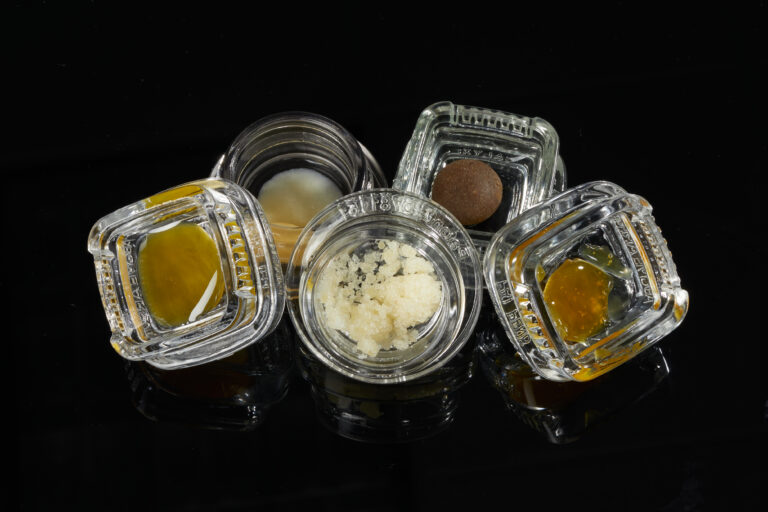 Photo by: Gina Coleman/Weedmaps
Photo by: Gina Coleman/WeedmapsImage lightbox

Concentrates are the product of the more desirable properties of cannabis — namely cannabinoids and terpenes — that have been separated from the plant matter and distilled or concentrated. Cannabis concentrates are available in various formats and textures, including live resin, hash, and oil, and many of these exhibit high concentrations of THC as their main selling point.
Edibles
 Photo by: Gina Coleman/Weedmaps
Photo by: Gina Coleman/WeedmapsImage lightbox

Homemade edibles are usually made with infused cannabutter or cooking oil, but you can find a range of store-bought edibles at dispensaries, including THC-infused gummies, chocolates, cookies, chips, beverages, mints, and more.
Ingested cannabinoids are processed differently than inhaled cannabis, which can often mean that a THC edible product is much more intoxicating due to the liver conversion of THC to a more potent breakdown product. This also delays the onset of the effects, occurring in about 30 to 90 minutes, and extends their duration from four to eight hours, depending on the dose and the person.
Tinctures
 Photo by: Gina Coleman/Weedmaps
Photo by: Gina Coleman/WeedmapsImage lightbox

Tinctures are liquid extracts typically made by dissolving THC-rich cannabis or its resin in alcohol or oil. They result in a concentrated liquid form that you can consume sublingually (under the tongue) or with food and beverages. Tinctures are a popular choice if you're seeking the benefits of THC without smoking, vaping, or taking edibles, and they allow for customized dosing.
Topicals
 Photo by: Gina Coleman/Weedmaps
Photo by: Gina Coleman/WeedmapsImage lightbox

THC topicals include creams, lotions, balms, and oils that you can apply to your skin for potential localized relief of pain, inflammation, and other skin conditions. They do not produce the psychoactive effects associated with the ingestion or inhalation of cannabis.
Bottom line
Humans have known about THC's intoxicating properties for millennia, but our understanding of its potential therapeutic uses has grown significantly in the past century. It can induce a euphoric high and offers potential pain, nausea, and anxiety-relieving benefits. Start with the lowest dose possible and increase it gradually to find the proper THC regimen for your mind and body.
FAQ
Can Delta-9 THC get you high?
Yes, Delta-9 THC is the main intoxicating compound in cannabis and is likely to get you high if you consume enough.
Is Delta-9 THC safe?
Depending on your dosage and individual tolerance, THC can be considered safe when consumed legally and in moderation. Excessive consumption can lead to adverse effects, such as increased anxiety, impaired motor skills and memory, and, over time, dependence. Start with the lowest dose possible and consider taking a tolerance break if you're a frequent consumer.
How much Delta-9 THC should I consume?
The right THC dose for you depends on your tolerance, body weight, and desired effects. If it's your first time trying THC, start with a low amount, such as a quarter or half of an edible or a single puff of a joint, then gradually increase your consumption to find your optimal dosage.
Consult a healthcare professional if you're concerned about combining THC with a preexisting medical condition or medications.
Is Delta-9 THC legal?
Cannabis products containing more than 0.3% THC remain federally illegal in the US. Cannabis is considered a Schedule I controlled substance, which means it's unlawful for any purpose under federal law. That said, some states have legalized cannabis for recreational and/or medical purposes. Check your local laws before purchasing or consuming THC.
Delta-8 vs. Delta-9 vs. Delta-10: what's the difference?
Delta-8 THC, Delta-9 THC, and Delta-10 THC are all different forms of THC. Regarding intoxicating effects, Delta-9 THC is the most well-known and delivers the strongest effects. Delta-8 THC is less potent but can still produce a high, while Delta-10 THC sits somewhere in between.
Delta-8 and Delta-10 THC exist in a legal grey area and are not regulated, so caution is advised as they may be contaminated with potentially harmful synthetic compounds. Check your local laws before purchasing or consuming either compound.
Can you buy Delta-9 online?
No, you cannot buy Delta-9 THC online. Buying it online may be illegal and subject to legal consequences.
This article was reviewed by Bonni Goldstein, MD, a physician specializing in cannabis medicine in Los Angeles, California, owner and medical director of CannaCenters, and medical advisor to Weedmaps.com.

